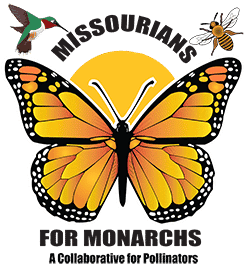The eastern monarch butterfly population migrates from Mexico through the United States and to Canada in the spring and summer and then returns to Mexico in Autumn. Monarch butterflies have specific habitat needs to reproduce along their multigenerational migration route. Milkweeds (Asclepias spp.) are the only plants a female monarch will lay her eggs on and the only plant monarch caterpillars will eat. This means that without milkweed, there would be no monarch.
Whether it be for reproduction or travel, adult monarch butterflies need nectar-rich flowers along their migration route. When establishing a monarch butterfly habitat, it is critical to plant diverse native species with overlapping bloom times in addition to milkweed. Not only will the native species help the monarch, but they will also provide ecosystem services to other pollinators and wildlife in your area.
Some excellent native species to begin with are:
- Asters
- Goldenrod
- Joe-Pye weed
- Cardinal flower
- Purple coneflower
- Salvia
- Bergamot
- Blazing star
- Rattlesnake master
In Missouri, native milkweed species include, but are not limited to:
- Common milkweed (Asclepias syriaca)
- Marsh or Swamp milkweed (Asclepias incarnata)
- Butterfly milkweed (Asclepias tuberosa)
- Purple milkweed (Asclepias purpurascens)
- Green or Spider milkweed (Asclepias viridis)
- Whorled milkweed (Asclepias verticillate)
- Sullivant’s milkweed (Asclepias sullivantii)
To find native plants for your pollinator habitat, visit the Grow Native! Resource Guide
More habitat resources are coming soon!
Create Habitat
For information on creating habitat around your home or community, check out these links:
